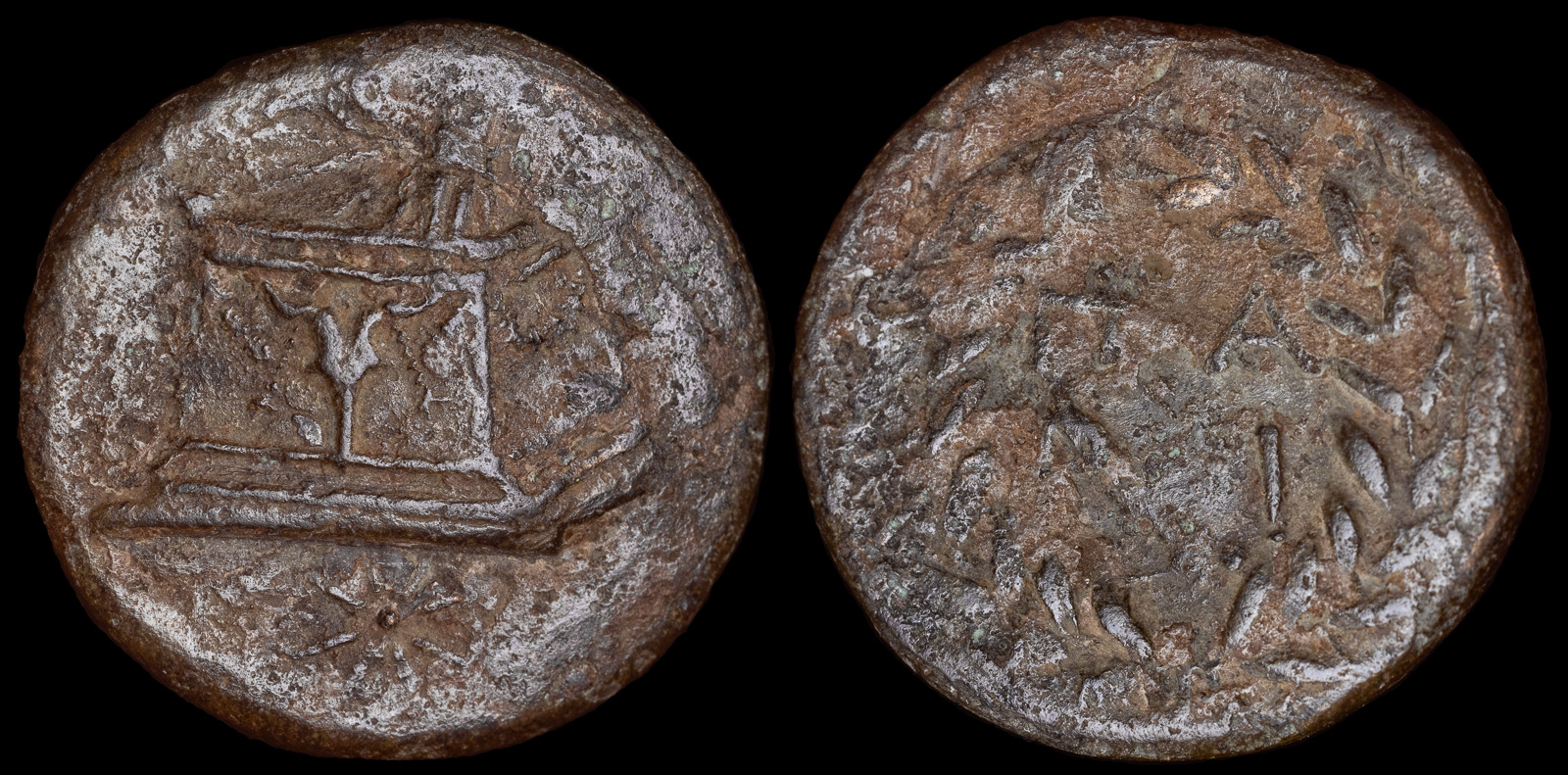
Mysia, Parion
c. 350-300 BCE
Æ 20mm, 4.83g, 12h
Altar ornamented with a boukranion; star below. R/ ΠΑ/ΡΙ within olive wreath
SNG BnF 1396 var. (no star)
Ex London Ancient Coins
I find this coin fascinating due to one of the first three dimensional depictions on a coin. Although I was not able to find more specific information on the purpose of this altar, it is still a fascinating image. While the city is more known for its gorgon coins, I chose this one due to it’s uniqueness.
Parion was an important customs point during ancient times. Strabo wrote that it was a foundation of Miletos, Erythria, and native Parians. He also relates an interesting story about a legendary people with a relationship with serpents. Supposedly, if you were bitten by a poisonous snake, a male of these people could remove the poison through continuous touching while speaking enchantments. He would transfer the poison this way to himself, then cure it completely. The founder of this people had transformed from a snake to a person himself.
In recent excavations, toys were found in the graves of children buried around the time this coin was minted. Presumably they were to help guide the poor little ones in the afterlife.
Although I haven’t been able to find the literature, the dating of this coin is debated. Some sources place it between 350-300 BCE and some in the 3rd century BCE. If this is from the 4th century, then the image would be all the more remarkable because it’s completely different from the style of that period.

Mysia, Parion
circa 300-200 BCE
Æ 10 mm, 0,98 g
Obv: Bunch of grapes.
Rev: Π-A / P-I. Ear of barley.
SNG BN -; SNG Arikantürk 677
Parion is founded by settlers from Miletos.
With the downfall of the Kingdom of Lydia, Adramytteion, Parion, Phokaia, and Aigai go under the Persian Empire.
Peace of Antalkidas, arranged by Artaxerxes II, is signed in Susa, ending the Corinthian War. Abydos, Aigai, Kalchedon, Kaunos, Klazomenai, Kyzikos, Parion, Samos, and Adramytteion become part of the Persian Empire.